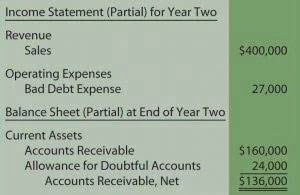Content
![]()
While all rule aspects defined within a rule block are processed simultaneously, rule blocks are processed in sequence. Therefore, before defining the rules, you must consider the sequence in which the rules should be processed. If you have two distinct rule conditions that require the same approval routing, then you must enter the rule conditions in two separate rows. Ensure that the information in the Approvers section is identical for both the rows. Members of an approval group receive approval notifications. Only one member is required to take an action on the approval notification.

The following table shows the lines, accounts, and debits and credits for an unposted journal in the ledger currency with entered amount differences for each balancing segment value. The posting process checks entered amounts, accounted amounts, and balancing segment values in determining whether a journal balances. When differences can’t be handled automatically, the posting process fails. Throughout the year or the accounting period, ledger accounts are posted.
How Can I Run The Autopost Process?
It provides existence & accuracy of the financial transactions posted, recorded or transferred in the individual ledgers. In the beginning, we talked about the procedure of recording a transaction. If any of the above steps is missing, then it would be hard to prepare the final accounts. The Journal is a book where all the financial transactions are recorded for the first time. When the transactions are entered in the journal, then they are posted into individual accounts known as Ledger. The ledger is a principal book wherein journal entries are classified as account wise and posted to individual accounts. It is essentially a set of all real, personal, and nominal accounts where transactions affecting them are recorded.
Object, which has details for the period that the journal belongs to. Structure definition of the Journals Captured Information descriptive flexfield. Structure definition of the Journal Lines descriptive flexfield. Structure definition of the Journals descriptive flexfield. Structure definition of the Journal Categories descriptive flexfield.
You can download a spreadsheet template to use to prepare your journal entry data. The template contains an instruction sheet to help guide you through the process of entering your journal information. This example uses headcount to illustrate how a company can record statistical information in a journal entry. The posted statistical balances can then be used in journal entries that allocate expenses. Total debits must equal total credits for all journal entries except for statistical journal entries. This can help ensure an effective period close process that validates all transactions are complete and aren’t held up during the close. Once transactions are entered in relevant journals, this information is then posted to specific accounts which are most often grouped together in the form of ledgers.
Reverse Journals
You can reverse journals manually by selecting a reversal action in the user interface, or you can reverse journals automatically by running a process. Decide which approach is best for journals such as accruals, estimates, errors, temporary adjustments, or reclassifications that require reversal.

Based on the position hierarchy, which is defined in HCM. The position hierarchy must be defined and employees must be assigned the corresponding positions. Use this hierarchy if you need a hierarchy that’s different from the supervisory hierarchy, or multiple hierarchies selected based on different attributes. Employees must be set up with the appropriate job levels and supervisors. Based on the employee supervisory hierarchy, which is defined in HCM. Employees must be set up with appropriate jobs and supervisors. For example, a clerk reports to a manager, who reports to the director.
Example Of An Accounting Cycle
You can include additional columns for dates and descriptions of the transactions. Ledgers are prepared in continuity, with ledger account balances from one accounting period being carried forward to the subsequent accounting period. The purpose the ledger is to determine balances of all accounts to prepare the trial balance and financial statements.
- These other transactions are recorded in the general journal.
- In the double entry system of accounting, ledgers and journals are playing a vital and important role.
- • Journal has two columns for debit and credit, whereas a ledger has two sides of an account one for debit and the other for credit.
- A list of valid values can be found in the lookup type XCC_BC_FUNDS_STATUSES.
- Builds the approvers list by using a specific user, enterprise group or application role.
- The balancing of the transactions recorded in the general ledger is done at the end of the account.
The business transactions are primarily recorded in the journal and thereafter posted into the ledger under respective heads. While many financial transactions are posted in both the journal and ledger, there are significant differences in the purpose and function of each of these accounting books. Single-entry bookkeeping rarely used in accounting and business. It is the most primary form of accounting and is set up like a checkbook, in that there is just a single account used for each journal entry. It is a basic running total of cash input and cash outflow. Double-entry bookkeeping is the most general form of accounting.
In a journal, the entry is recorded sequentially, i.e., as per the fate of the transaction. Journal books are often used by students and professionals to record their thoughts, feelings, and experiences. A journal book typically contains blank pages for writing, and may also include some lined pages for structure.
Generate your defined allocation formulas to automatically populate the allocated data to the import interface. Load the completed spreadsheet into the import interface. This method requires the most time and is open to errors from human intervention. Check box to deselect difference between ledger and journal the subledger that you want to exclude. Provides more meaningful and accurate financial reporting, because all exceptions would have been resolved and accounted for, before reporting. Uses Oracle Fusion General Ledger and all of the Oracle Fusion subledgers.
Which One Is More Important, Journal Or Ledger?
Because each transaction is initially recorded in a journal rather than directly in the ledger, a journal is called a book of original entry. Are entered and accounted amounts in balance, or are accounted amount differences within threshold? If no, and suspense is enabled, suspense balancing lines are created and the balancing process is complete. Review the AutoPost process results on the AutoPost Execution report. This report is automatically created when the process completes successfully.
Instead, if you submit the period close process from the Scheduled Processes page, this same message will appear in the process log files. The rest of the message helps get you started with processing the pending transactions and resolving exceptions. This keeps the information organized not only by date, but also by account type.
How To Record A Journal Entry For A Sale On An Account
As the rate date for evaluating transactions that satisfy rule conditions. In the Rule Templates section, select the required workflow. Button located in the Instructions sheet to generate the rule file. Section, select the attributes based on which the approver varies for the transaction. Currently, data sets are only available for templates for Payables Invoice Approval Workflow.
- These three predefined assignees are arranged in the parallel mode.
- There may be several journals, each one usually dealing with high-volume areas, such as purchase transactions, cash receipts, or sales transactions.
- Double entry system of bookkeeping says that every transaction affects two accounts.
- The set of real, personal and nominal accounts where account wise description is recorded, it is known as Ledger.
- These books of accounts are the basis for preparing financial statements.
General Ledger analyzes the journal entry and creates the additional balancing journal lines for the following situations in the order listed. Download and review diagnostic logs for transactions with errors.
This can help businesses audit their finances before publishing financial records. A journal and ledger are two types of books that are routinely used in the process of accounting. Considered key to what is known as double entry accounting, each of these books serves specific purposes within the overall process of keeping accurate financial records. While many of the transactions posted in both these books are the same, there are key differences in the purpose and function of each of these accounting books. For instance, a secondary ledger may be required for local government compliance and reporting. Suspense, rounding imbalances, and intracompany balancing lines are generated independently for each secondary ledger at journal and subledger level by the posting process.
The journal was created directly in the secondary ledger. When enabled, the automatic reversal process is submitted with the reversal period choice of All. The Create Journal Reversal Criteria Set page lists all of the journal categories with default reversal settings. Find the journal categories that you want to specify reversal criteria for and set the values accordingly. Leave the fields blank on the Reverse Journal Batch window. Each of these journals is reversed according to the journal’s reversal settings.

The following figure outlines the flow of accounting data between the subledgers and General Ledger. You can use the Create Journals workbook for high volume journal entry. You can prepare the journals offline, distribute https://www.bookstime.com/ the workbooks for review, or save the journals for recurring entry. The following table shows the journal entry that was created, using the STAT currency, to capture the headcount information for each department.
On the Journals page at any time in the approval process to withdraw journals from the process. Clicking this button enables editing of the journal. After your changes are made, submit the entry for approval again. When a journal is withdrawn, the completion status is set to Incomplete. If yes, rounding balancing lines are created and the balancing process is complete. If no, the difference is added to the largest line and the balancing process is complete.
You can review these journals in the Journals region. You get to the region from both the General Accounting Dashboard and the Journals work areas.
Accounting Ledger Vs Journal: What’s The Difference?
The supervisory hierarchy must be defined along with the corresponding job levels. The following table provides an example of rule conditions and approval actions that route a journal approval based on maximum journal line amounts. The following figure shows the flow that the posting process follows to balance journals that have multiple currencies. Journal batches that were saved, but not yet completed. You can set the journals to complete or select the journal to review it in the Edit Journal page.
Some organizations may choose to keep specialized journals such as purchase journals or sales journals that are meant to record specific types of transactions. In a computerized accounting system, the concepts of journals and ledgers may not even be used. In a smaller organization, users may believe that all of their business transactions are being recorded in the general ledger, with no storage of information in a journal. Companies with massive transaction volume may still use systems that require the segregation of information into journals. Thus, the concepts are somewhat muddied in a computerized environment, but still hold true in a manual bookkeeping environment.
General Journals
Mike Parker is a full-time writer, publisher and independent businessman. His background includes a career as an investments broker with such NYSE member firms as Edward Jones & Company, AG Edwards & Sons and Dean Witter. He helped launch DiscoverCard as one of the company’s first merchant sales reps.
The Requiring Attention tab also shows journals with rejected approvals. The journal line level for a cross currency journal. By default, the Search section on the Manage Journals page automatically collapses after you perform a search. If you plan to run multiple searches at a time, you can change a setting to keep the Search section expanded. Reject the transaction if the workflow task is currently assigned to you to approve or reject.
